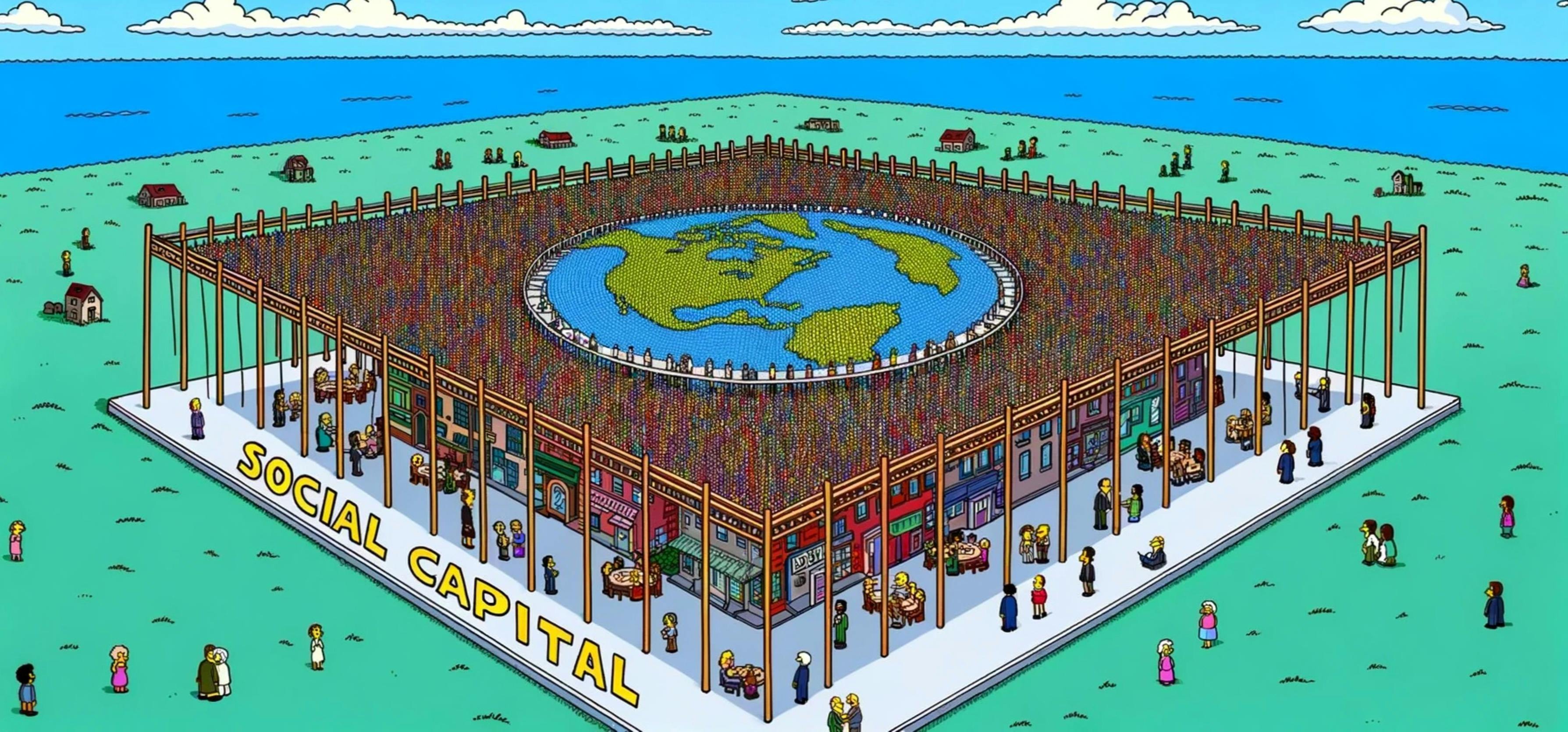
Evolution and Implications of Social Capital
The Interwoven Threads of Trust, Connection, and Community in Modern Society
In the intricate tapestry of societal structures, few threads have been as instrumental in shaping individual and collective destinies as 'social capital.' But what is social capital, and why has it garnered the attention of sociologists, policymakers, and community leaders alike? Drawing from some seminal works on the subject, this article delves into the concept, its evolution, and its profound implications for contemporary society.

At its core, social capital is about relationships. As defined by sociologist Alejandro Portes, it pertains to the capacity of individuals to access scarce resources through their affiliations in networks or broader social structures. This capital isn't just about resources—it's also about the flow of information, shared norms, trust, and mutual benefits that arise from being part of a network.

In his landmark study, "Bowling Alone: The Collapse and Revival of American Community," Robert D. Putnam paints a concerning picture of the decline of social capital in the U.S. since the 1960s. Through evidence like reduced community participation and fewer informal social interactions, Putnam illuminates a trend of increasing individualism and decreasing communal bonds. Factors such as technological advances and increasing media consumption have played pivotal roles in this shift.
This decline is not just a matter of fewer community picnics or bowling leagues. The erosion of social capital has tangible consequences for societal well-being. There's a direct correlation between the decline in social capital and negative impacts on health, child welfare, and trust within communities.

The importance of social capital becomes even more evident when viewed through a historical lens. Putnam's "Making Democracy Work: Civic Traditions in Modern Italy" provides a riveting case study. In examining the performance of regional governments in Italy, the study unearthed stark differences rooted in varying levels of civic engagement and social capital. The regions with rich traditions of civic participation, mainly in Northern Italy, showcased more effective governance compared to their less-engaged southern counterparts. These disparities in societal engagement and social capital can be traced back centuries, underscoring the long-standing impact of these constructs on governance and societal efficiency.

While the benefits of social capital are manifold, it is essential to recognize its potential pitfalls. Strong in-group ties, while fostering trust and cooperation within, can also lead to the exclusion of outsiders. Moreover, when certain groups have more access to beneficial networks, it can perpetuate inequality and hinder social mobility. As Portes highlights, social capital, like all forms of capital, can be used for both inclusive growth and exclusionary practices.
The discourse around social capital underscores a universal truth: human beings thrive in connection. The bonds we forge, the communities we nurture, and the trust we instill in one another have far-reaching implications, from the health of our democracies to the well-being of our children.
In an era marked by rapid technological advancements and changing social dynamics, it becomes imperative to foster avenues for genuine interpersonal interactions and community building. Only by recognizing and addressing the challenges and harnessing the positive potential of social capital can societies hope to create a cohesive, inclusive, and prosperous future.
Only now do we have the tools that could codify these and make them formal in a ditigal world caressed with mechanisms that increase the benefits while minimizing the negatives, but more on that in our next post.....

What is Social Capital? https://paragraph.xyz/@0xzoz/the-evolution-and-implications-of-social-capital